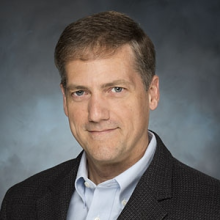-
Title
Physicist -
Email
pask1@llnl.gov -
Phone
(925) 422-8392 -
Organization
Not Available
Personal Background
After obtaining his B.S. in Physics, John Pask accepted a position at the Naval Nuclear Power School in Orlando, Florida, where he taught mathematics, physics, and reactor dynamics to naval officers and civilian engineers. He served as Director of the Mathematics and Physics division from 1993-94. While at Nuclear Power School, he did graduate work at the University of Central Florida, where he received an M.S. in mathematics in 1994. His Ph.D. thesis work with Prof. Barry Klein focused on the development and implementation of a new finite-element based approach to large-scale ab initio electronic-structure calculations. During the latter part of his graduate studies, he worked with Dr. Philip Sterne at the Materials Research Institute of LLNL on the extension and application of the finite-element based electronic-structure method to large-scale ab initio positron calculations, with primary focus on positron distributions and lifetimes to determine materials defects.
In 1999, Dr. Pask accepted a National Research Council Associateship to continue work on electronic-structure method development and applications with Dr. David Singh at the Naval Research Laboratory in Washington, DC. While there, he studied transition-metal compounds, using the full-potential linearized augmented planewave method and continued work on the finite-element electronic-structure method and associated large-scale positron applications. He received the Nicholas Metropolis Award for Outstanding Doctoral Thesis Work in Computational Physics from the American Physical Society in 2001 for his work on the development of the finite-element electronic-structure method.
Dr. Pask joined the EOS & Materials Theory group at LLNL in 2001. He continues work on ab initio electronic-structure method development and applications and currently serves as Director of a Lawrence Livermore/Lawrence Berkeley/UC Berkeley collaboration to develop and apply new discontinuous Galerkin and pole expansion and selected inversion electronic-structure methods to advance understanding of the chemistry and dynamics of Li-ion batteries. His most recent work has focused on the development and application of a new spectral quadrature electronic-structure method for massively parallel O(N) electronic-structure calculations of metals and insulators for the ExMatEx Exascale Co-Design Center with applications to complex materials at extreme conditions.
Ph.D., Physics, University of California at Davis, 1999
B.S., Physics, University of California at Davis, 1988
- "Spectral Quadrature method for accurate O(N) electronic structure calculations of metals and insulators," P.P. Pratapa, P. Suryanarayana, and J.E. Pask, Comput. Phys. Commun. 200, 96-107 (2016).
- "Anderson acceleration of the Jacobi iterative method: an efficient alternative to Krylov methods for large, sparse linear systems," P.P. Pratapa, P. Suryanarayana, J.E. Pask, J. Comput. Phys. 306, 43-54 (2016).
- "Periodic Pulay method for robust and efficient convergence acceleration of self-consistent field iterations," A.S. Banerjee, P. Suryanarayana, J.E. Pask, Chem. Phys. Lett. 647, 31-35 (2016).
- "Adaptive local basis set for Kohn-Sham density functional theory in a discontinuous Galerkin framework II: Force, vibration, and molecular dynamics calculations," G. Zhang, L. Lin, W. Hu, C. Yang, and J.E. Pask, submitted, 2015. arXiv: 1510.06489
- "A projected preconditioned conjugate gradient algorithm for computing many extreme eigenpairs of a Hermitian matrix," E. Vecharynski, C. Yang, and J.E. Pask, J. Comput. Phys. 290, 73-89 (2015).
- "Lithium ion solvation and diffusion in bulk organic electrolytes from first principles and classical reactive molecular dynamics," M.T. Ong, O. Verners, E.W. Draeger, A.C.T. van Duin, V. Lordi, and J.E. Pask, J. Phys. Chem. B 119, 1535-1545 (2015).
- "Hybrid preconditioning for iterative diagonalization of ill-conditioned generalized eigenvalue problems in electronic structure calculations ," Z. Bai, Y. Cai, J.E. Pask, and N. Sukumar, J. Comput. Phys. 255, 16–30 (2013).
- "dftatom: A robust and general Schrödinger and Dirac solver for atomic structure calculations ," O. Certik, J.E. Pask, and J. Vackar, Comput. Phys. Commun. 184, 1777–1791 (2013).
- "Finite elements in electronic structure," J.E. Pask, in Encyclopedia of Applied and Computational Mathematics, Björn Engquist (Ed.), Springer, Heidelberg, 2015. (Review)
- "Linear scaling solution of the all-electron Coulomb problem in solids," J.E. Pask, N. Sukumar, and S.E. Mousavi, Int. J. Multiscale Comput. Engng. (2012), in press.
- "Classical and enriched finite element formulations for Bloch-periodic boundary conditions," N. Sukumar and J.E. Pask, Int. J. Numer. Meth. Engng. 77, 1121 (2009).
- "Large-scale quantum mechanical simulations of high-Z metals," L.H. Yang, R.Q. Hood, J.E. Pask, and J.E. Klepeis, J. Computer-Aided Mater. Des. 14, 337 (2007)
- "Half-metallic digital ferromagnetic heterostructure composed of a delta-doped layer of Mn in Si,"M.C. Qian, C.Y. Fong, K. Liu, W.E. Pickett, J.E. Pask, and L.H. Yang, Phys. Rev. Lett. 96, 027211 (2006).
- "Finite element methods in ab initio electronic structure calculations," J.E. Pask and P.A. Sterne, Modelling Simul. Mater. Sci. Eng. 13, R71 (2005). (Review)
- "Real-space formalism for the electrostatic potential and total energy of solids," J.E. Pask and P.A. Sterne, Phys. Rev. B 71, 113101 (2005).


